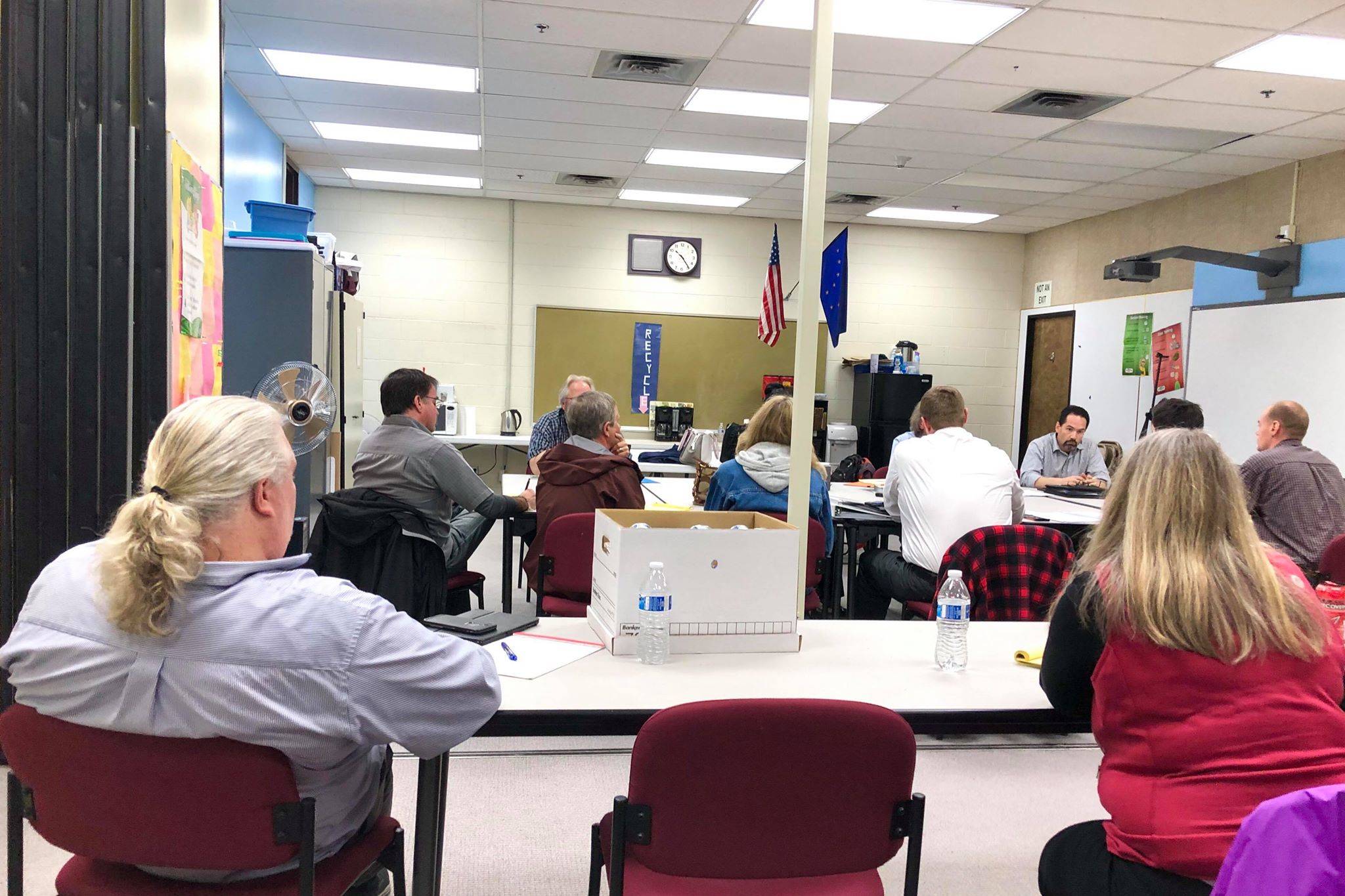School district employees rejected contract proposals from the Kenai Peninsula Borough School District Wednesday evening, following an all-day contract negotiation.
“We rejected proposals because they don’t meet our needs for the rising cost of health care,” David Brighton, president of the Kenai Peninsula Education Association, said.
Brighton said he felt that progress toward an agreement was made.
Pegge Erkeneff, communications liaison for the district, said there will be another bargaining session at 10 a.m. on Monday.
For the last year, contract negotiations between the school district and two employee associations, Kenai Peninsula Education Association and Kenai Peninsula Support Association, which represent non-tenured teachers and support personnel, have snagged on the rising cost of health care.
A previous agreement effective through June 2018 remains in use for the employees without contracts.
After months of negotiations, district and employee associations could not come to an agreement, so in February, an arbitrator held a hearing to help guide contract negotiations.
At the Wednesday meeting, the school district offered a proposal for each employee association, based on recommendations from the arbitrator’s report, released April 26.
“The district proposal accepts the recommendations in the arbitrator’s report,” Erkeneff said in a Wednesday press release.
The rising cost of health care has been a key sticking point in the negotiations.
The arbitrator’s report offered few suggestions for resolving the stalemate on health care costs but acknowledged the funding challenges facing the district as well as the evidence brought forth by the associations regarding health care employee cost share.
The report found that “evidence is irrefutable that it is costing KPBSD more to provide health care coverage, and that employees experience higher costs than virtually all of the other comparable districts,” which include districts in Anchorage, Mat-Su and Fairbanks.
Employee association negotiators said during Wednesday’s meeting that they wanted to reduce employees’ share of health care costs.
Since 2017, the district has provided employees with two options for health care benefits, which include a high deductible plan and a traditional plan. Employees pay 10% of the costs for the high deductible plan, and 15% of the costs for the traditional plan, according to the report.
One proposal put forward by employee association negotiators during collective bargaining was to incorporate wellness incentives into a health care plan.
The arbitrator’s report mentions that there are studies showing plans that incentivize efforts to reduce obesity rates, to educate people on the causes of high blood pressure and benefits of good nutrition and encourage more active lifestyles could reduce health care costs.
District negotiators said they would consider the concept of such a plan, but wanted more time to look into the potential cost savings.
Cost savings were also high on the district’s priority list at the Wednesday meeting.
The district has been spending more of their fund balance in recent years, and during the negotiations, district administration expressed concerns over continued budget uncertainties, at the state and borough level.
According to the arbitrator report’s conclusions, however, the district’s “uncertainty about state funding, while understandable is not a sufficient reason to withhold consideration of the increases and proposed changes sought by the associations.”
“Every district in the state has the same uncertainty, yet others have been able to determine that they can settle their contracts, and in certain instances to agree to wage increases,” the report said.
The report’s conclusions also ask that the borough assembly and Mayor Charlie Pierce are made aware of the district’s fund balance allocations made over the last five years.
Despite budget concerns, the district accepted the association’s original proposal for salary increases, which were also recommended by the arbitrator in their report.
For both employee associations, the arbitrator’s report recommends settling FY19, FY20 and FY21 bargaining with salary schedule increases in the amounts of .5% in FY19, 1% in FY20 and 2% in FY21. The report also recommends the shift differential for those working swing shifts be increased to 40 cents per hour, and to 60 cents for employees working the graveyard shift.
Bargaining will continue at 10 a.m. Monday. Location is yet to be determined.


